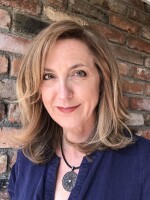Lake Tahoe has been a center of recreation for more than a century. But long before that, it was a home to the Washoe Tribe of Nevada and California. Historian Alicia Barber explores the tribe’s deep connection to the lake in this episode of Time & Place.
Every spring for thousands of years, members of the Washoe tribe made the move up from their winter homes in the Carson Valley to their ancestral lands on the shores of Lake Tahoe. There, for the next three to four months, they would fish, hunt, and harvest materials for medicines, baskets, and fuel, then leave in the fall to prepare for the annual piñon pine nut harvest.

Those traditional patterns were disrupted by the arrival of Euro-Americans in the 1840s. Within a few decades, the shores of Tahoe were the site of logging, ranching, and tourist operations. Still, many Washoe continued to spend their summers at the lake even as the property around their camps was bought and developed.
Winona James was one of them. Born in 1903, she spent her childhood moving between the Carson Valley and Lake Tahoe. Interviewed in 1984, she remembered those early summers at the lake.
“Lake Tahoe was a beautiful place before it got commercialized,” James said. “The Indians camped all over, along the beaches. They lived in tents with wind breaks—no permanent structures, just had a camp site and every year you went to their same camp site. First we lived at what's called Jameson Beach, right along the edge of the lake. We’d have a row of camps, a whole mess of them. I can't remember just how many.”
As wealthy estates and resorts like the Tallac House and The Grove sprung up around their campsites, James and her family, like other Washoe, adapted to the new economy. She got her first job in a photo shop at The Grove, while her uncle and grandmother turned their fishing expertise into a business venture.
“They had their boats docked right there, and they'd go from there every morning and go fishing. He would fish, you know, till noon or so, and then he'd come in and rest and then go back out in the evening. And then he'd sell fish to the tourists from San Francisco,” James said.
Eventually, ongoing development made the tribe’s seasonal migrations impossible. Today, Jameson Beach is lined with multi-million dollar homes. The Washoe Tribe operates the Meeks Bay Resort on National Forest Service land on the lake’s western shore. And in 2009, the tribe was for the first time granted their own land at the lake—24 acres held in trust near Skunk Harbor. For Reno Public Radio, I’m Alicia Barber.
Alicia Barber is an award-winning historian and author. Oral history clips for this segment were provided by the Special Collections Department of the University of Nevada, Reno Libraries. Winona James’ complete oral history transcript can be viewed here.







